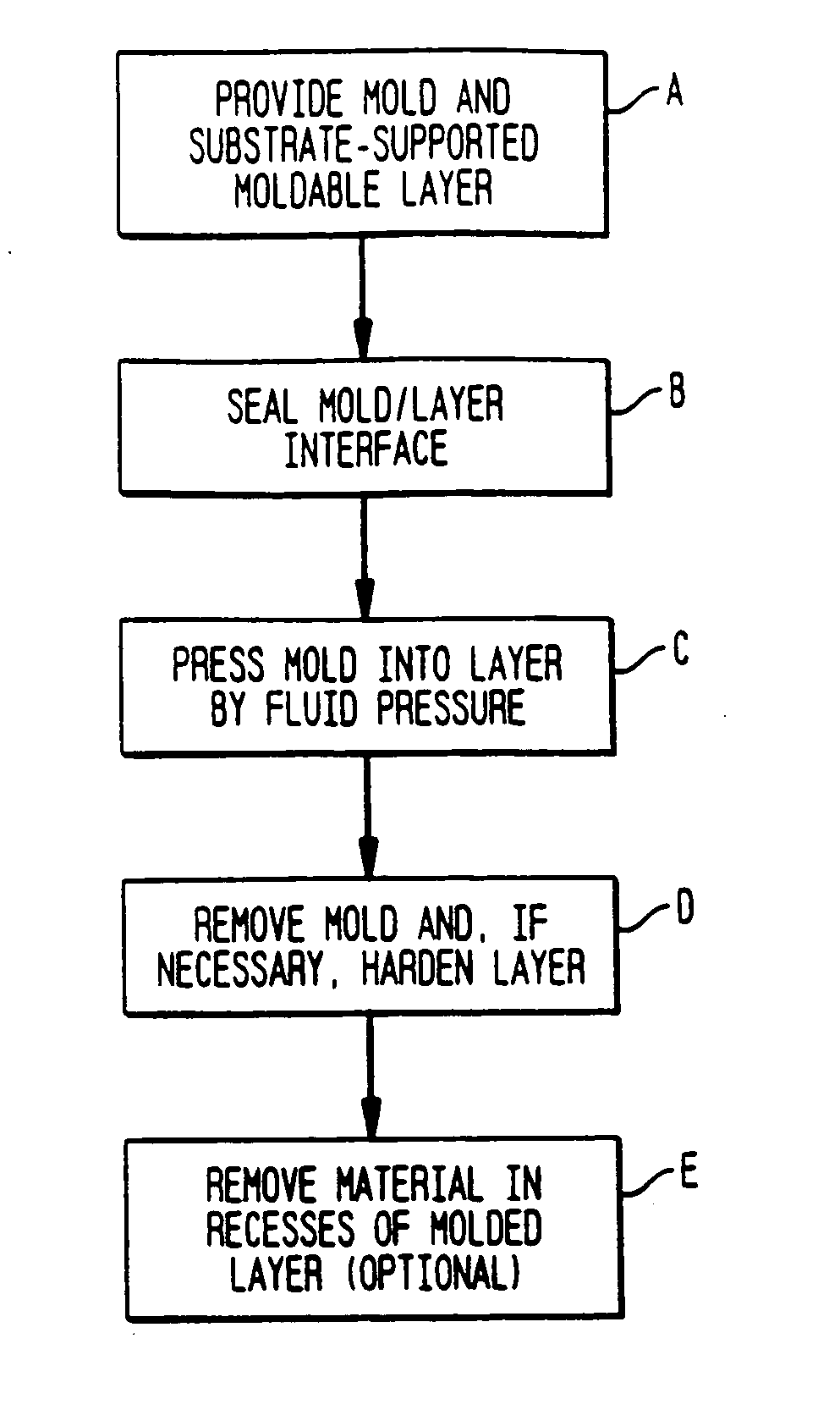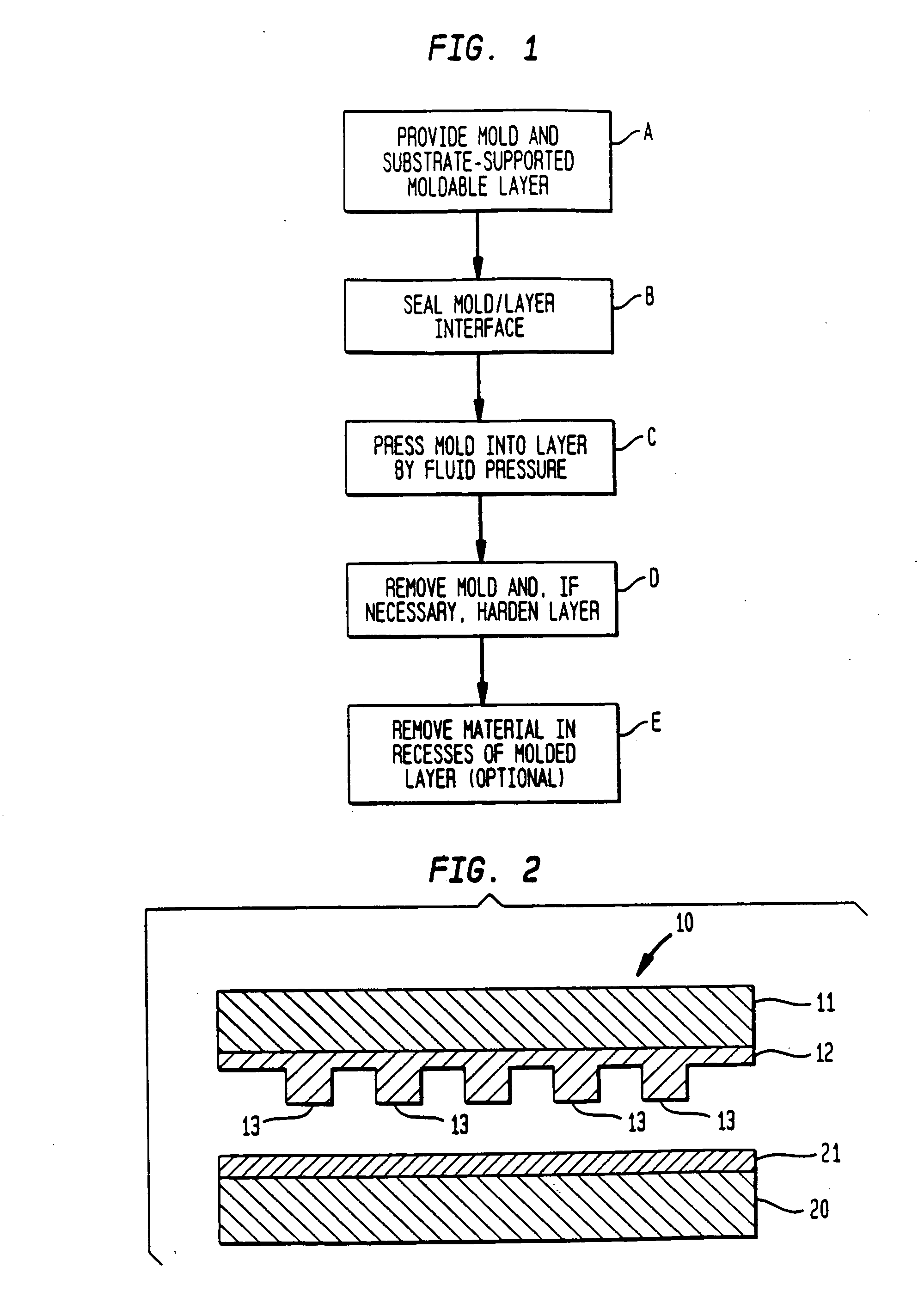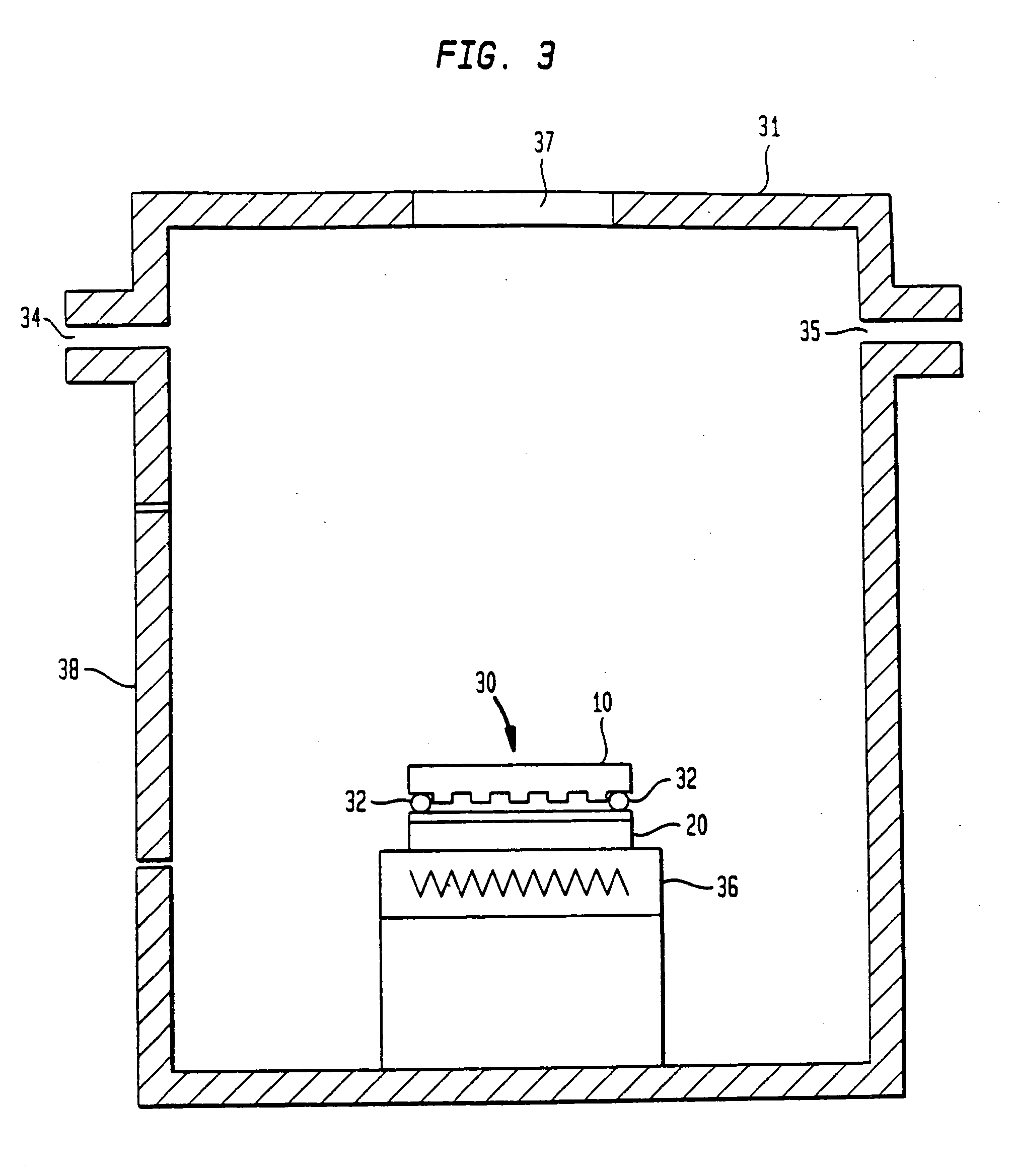Apparatus for double-sided imprint lithography
- Summary
- Abstract
- Description
- Claims
- Application Information
AI Technical Summary
Problems solved by technology
Method used
Image
Examples
Embodiment Construction
[0025] The use of a high precision mechanical press to press a mold into a thin film presents tolerance problems in replicating small patterns over large areas. Presses move on guide shafts through apertures, and the spacings between the shafts and their respective apertures can be large compared to the features to be replicated. Such spacings permit undesirable relative translational and rotational shifts between the substrate and the mold. Moreover, despite the most careful construction, the molds and the substrates used in lithography are not perfectly planar. When these molds and substrates are disposed on the rigid plates of a press, the deviations from planarity over large areas can result in variations in the molding pressure and depth of imprint. Accordingly, it is desirable to provide a method of imprint lithography which avoids the limitations of mechanical presses.
[0026] The problem of unwanted lateral movements of mechanical presses is ameliorated by using direct fluid ...
PUM
| Property | Measurement | Unit |
|---|---|---|
| Angle | aaaaa | aaaaa |
| Length | aaaaa | aaaaa |
| Nanoscale particle size | aaaaa | aaaaa |
Abstract
Description
Claims
Application Information
 Login to View More
Login to View More - R&D
- Intellectual Property
- Life Sciences
- Materials
- Tech Scout
- Unparalleled Data Quality
- Higher Quality Content
- 60% Fewer Hallucinations
Browse by: Latest US Patents, China's latest patents, Technical Efficacy Thesaurus, Application Domain, Technology Topic, Popular Technical Reports.
© 2025 PatSnap. All rights reserved.Legal|Privacy policy|Modern Slavery Act Transparency Statement|Sitemap|About US| Contact US: help@patsnap.com



